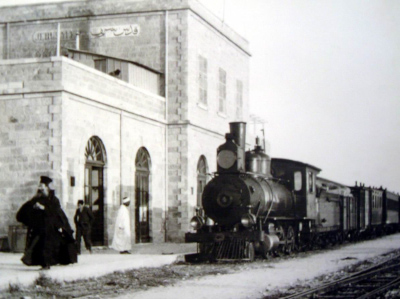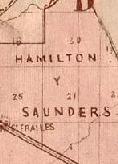![The North Adams [Michigan] Transcript 1899 April 05 The North Adams [Michigan] Transcript 1899 April 05](gpics/TheNorthAdamsTranscript_1899April05.jpg)
The North Adams [Michigan] Transcript
1899 April 05 (Courtesy Lauretta Cole)
![Asheville [North Carolina] Citizen Times 1899 November 02 (click to enlarge) Asheville [North Carolina] Citizen Times 1899 November 02](gpics/AshevilleCitizenTimes_Thu_Nov_2_1899.jpg)
Asheville [North Carolina] Citizen Times
1899 November 02
by Glenna Smith and Janice Smith, as told by their uncle Thomas Corts Harrison.
Images and notes added by David A. Wyatt.
Email: dawwpg@shaw.ca
[September 16th, 1973, on the occasion of the celebration of Glenna and Janice's Aunt Emma Surber (née Harrison)'s 80th birthday in Perdue, Saskatchewan]
![The North Adams [Michigan] Transcript 1899 April 05 The North Adams [Michigan] Transcript 1899 April 05](gpics/TheNorthAdamsTranscript_1899April05.jpg)
The North Adams [Michigan] Transcript 1899 April 05 (Courtesy Lauretta Cole) |
![Asheville [North Carolina] Citizen Times 1899 November 02 (click to enlarge) Asheville [North Carolina] Citizen Times 1899 November 02](gpics/AshevilleCitizenTimes_Thu_Nov_2_1899.jpg)
Asheville [North Carolina] Citizen Times 1899 November 02 |
![SS Ems [NDL] SS Ems [NDL]](gpics/ems-1884-s.jpg) |
 |
![Savoia [La Veloce] Savoia [La Veloce]](gpics/Savoia-LaVeloce.jpg) |
They were very crowded on this first leg of the trip, for some Italian immigrants were being refused entry to the United States and had to return to Italy, causing a much more uncomfortable voyage than it should have been. The voyage was 15 days long and they encountered very bad weather for three days. The ship arrived at Naples, and the party stayed there for 10 to 15 days. They shipped from Naples on the Baron[8] for Port Saïd, Egypt. They waited in Port Saïd for eight days, then sailed on the Catardo[6] for Beirut. At Beirut they were quarantined on the ship because there were cases of smallpox aboard. The quarantine period was fifteen days. They left from Beirut to Jaffa and from there proceeded by train to Jerusalem[7]. There were 19 people when they got to Jerusalem, and they all went together on the rental of a large building for their first residence there.
Thomas Harrison, Jr. (in partnership with a Jewish fellow) leased or bought land in Jericho and tried raising garden vegetables to sell, but this venture failed for the Arabs would come in the night and steal everything before they could harvest it.
Elizabeth Harrison (née Corts), while in Jericho, worked in a hotel[9] for a man named Clark. The hotel was connected with the Cooks Travel Agency. They stayed about one season only and left there to come back to Jerusalem.
They rented a house owned by one Captian Johnson and Thomas Harrison, Jr. drove a carriage for work to do. Smallpox struck the family at this time and everyone but Thomas C. and Anna who were away working had it. The smallest child, Mary Harrison died of the disease, and is buried on the Mount of Olives.
Thomas C. worked for missionaries Miss Dunn and Miss Brown as a houseboy and cook's helper. These ladies were Methodists and ran a school teaching English and Arabic. It was here Tom learned to read and write Arabic, and has at home the first Bible he was given, with his signature in Arabic written in it. He used to lead blind girls to Sunday school while working for the Missionaries. Jack also worked as a houseboy for missionaries.
During their time in Jerusalem, young Tom also worked in Hebron as a houseboy for a couple who were missionaries there.
Thomas Harrison, Jr. and his wife Elizabeth worked in a sanitorium in Jerusalem. They had been in the Holy Land for about two years when they decided to return to Michigan.
The family travelled from Jerusalem to Naples, where the Health board rejected their return to America. The British Consul in Naples told them of the opportunities to be found in Patagonia, South America. When they got to Naples after leaving Jerusalem, they found a trunk to be missing and unfortunately it contained Elizabeth's wedding ring and marriage certificate, among many other things. The ship it was on was said to have sunk.
They sailed from Genoa on the Savoya[5] for South America. The ship touched in Montevideo and then sailed on to Buenos Aires. (It should be noted here that all the ships they travelled on were steamships.) They were quarantined at Buenos Aires for 15 days and Thomas C. believed it was because of measles on board. The family finally arrived at Rio Gallegos in October of 1901.
 The family worked on a ranch at Puenta Layola [Punta Loyola], and the land ran
down the coast to Cabo
Virgenes. They carried from 40,000 to 50,000 sheep. Partners John
Hamilton and Tom
Saunders owned this ranch. Saunders had a ranch in Punta Arenas,
named Ottway Station,
and also had a cattle ranch of 3,000 to 5,000 animals at Rio
Gallegos. Jack and Tom worked as
Sheep herders, and they learned to speak Spanish well. Anna and
her mother Elizabeth worked as
cooks on the ranch and the elder Thomas worked as a handyman at
this time, also on the ranch.
Mary Harrison was born to Thomas and Elizabeth in Punta Arenas on
February 23, 1906. Her
birth certificate is written in Spanish.
The family worked on a ranch at Puenta Layola [Punta Loyola], and the land ran
down the coast to Cabo
Virgenes. They carried from 40,000 to 50,000 sheep. Partners John
Hamilton and Tom
Saunders owned this ranch. Saunders had a ranch in Punta Arenas,
named Ottway Station,
and also had a cattle ranch of 3,000 to 5,000 animals at Rio
Gallegos. Jack and Tom worked as
Sheep herders, and they learned to speak Spanish well. Anna and
her mother Elizabeth worked as
cooks on the ranch and the elder Thomas worked as a handyman at
this time, also on the ranch.
Mary Harrison was born to Thomas and Elizabeth in Punta Arenas on
February 23, 1906. Her
birth certificate is written in Spanish.
During this period, Thomas Harrison, Jr. was corresponding with
his nephew Howard Harrison,
in Perdue, N.W.T. The letters from Canada told of
good land and homesteading
opportunities in Saskatchewan. Howard Harrison had bought his
land for $3.00 an acre from
the C.P.R. and when it was sold it brought $80.00 an acre. The
family decided to go to Canada and
homestead in Saskatchewan too.
![SS Gaelic [White Star Line] SS Gaelic [White Star Line]](gpics/Ssgaelic.jpg) |
Because the family numbered eight in all (Thomas Jr. and
Elizabeth, and children Thomas C.,
Anna, Jack, Paul, Emma and Mary), they were divided up, some
wintering with Howard
Harrison at Wheatfields, and the rest with his sister Jen Byce [at Asquith]. The following
spring they bought their own homestead, close to the town of
Perdue.
![Tunisian [Allan Line] Tunisian [Allan Line]](gpics/Tunisian-AllanLine-s.jpg) |